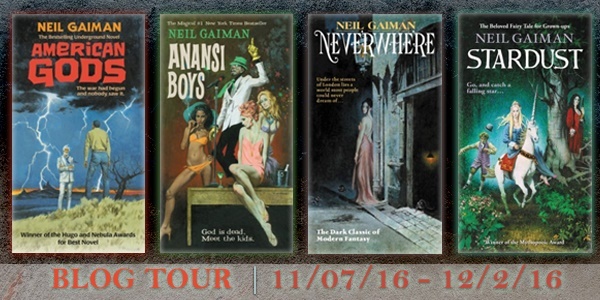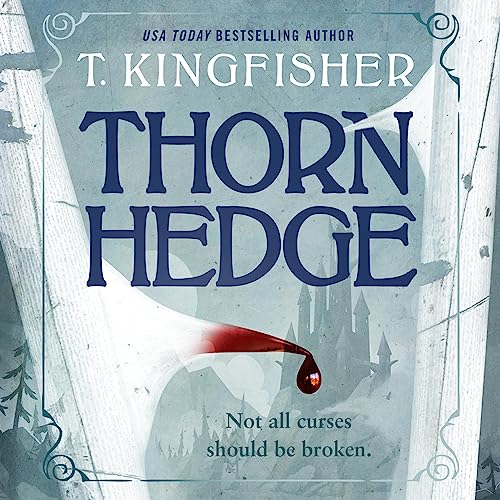 Thornhedge by T. Kingfisher
Thornhedge by T. Kingfisher Narrator: Jennifer Blom
Format: audiobook, eARC
Source: supplied by publisher via Edelweiss, supplied by publisher via Libro.fm
Formats available: hardcover, ebook, audiobook
Genres: Dark Fantasy, fairy tales, fantasy, retellings
Pages: 128
Length: 3 hours and 43 minutes
Published by Tor Books on August 15, 2023
Purchasing Info: Author's Website, Publisher's Website, Amazon, Barnes & Noble, Kobo, Bookshop.org
Goodreads
From USA Today bestselling author T. Kingfisher, Thornhedge is an original, subversive fairytale about a kind-hearted, toad-shaped heroine, a gentle knight, and a mission gone completely sideways.
There’s a princess trapped in a tower. This isn't her story.
Meet Toadling. On the day of her birth, she was stolen from her family by the fairies, but she grew up safe and loved in the warm waters of faerieland. Once an adult though, the fae ask a favor of Toadling: return to the human world and offer a blessing of protection to a newborn child. Simple, right?
If only.
Centuries later, a knight approaches a towering wall of brambles, where the thorns are as thick as your arm and as sharp as swords. He’s heard there’s a curse here that needs breaking, but it’s a curse Toadling will do anything to uphold…
My Review:
Once upon a time, there was a beautiful princess who was cursed by an evil fairy godmother to prick her finger on a spinning wheel’s spindle and sleep for a century – along with everyone else who inhabits that castle. This isn’t that story. That’s the story that was made from this one, when the truth needed to be spindled in order to make the story fit a more conventional mold.
Because in all the stories, evil is supposed to be ugly and anyone beautiful must be good. Which is what makes it a story, because in truth, evil often wears a very pretty face – all the better to hide the rot within. But that’s not the way the story is supposed to go – so it didn’t.
The truth, or at least this version of the truth – is considerably different – as the truth generally is.
Toadling has watched seasons change and years pass beyond counting, guarding the thornhedge that surrounds the darkling woods that encase the decaying castle where the beautiful princess sleeps a troubled, enchanted sleep. Once upon a time, Toadling was human. Once upon a time, she might have been that princess.
Once upon a time, she made a terrible mistake that put her exactly where she is, standing guard, doing her sometimes human, sometimes toad-like best to perform her self-imposed duty of keeping the princess safe – and keeping everyone else safe from the princess.
Just as Toadling is almost, almost sure that all knowledge of the lost princess and the crumbling tower has slipping out of time and mind of the rest of the world, her sanctuary is invaded in the kindliest and most annoyingly frustrating – at least for Toadling – way possible. The knight Halim has a burning need to solve the mystery. If there’s a princess imprisoned in the crumbling castle, he’ll certainly rescue her – after all, he is a knight – if not either a very good or very successful one. But his primary motivation isn’t the princess, it’s solving the puzzle.
Which, in the end, he does. Just not the way that Toadling feared. Or even worse, hoped.
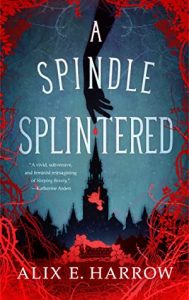 Escape Rating A: Thornhedge is a fractured fairy tale. In fact, Thornhedge and A Spindle Splintered are fractured versions of the same fairy tale, that of Sleeping Beauty. But they have been fractured along very different fault lines.
Escape Rating A: Thornhedge is a fractured fairy tale. In fact, Thornhedge and A Spindle Splintered are fractured versions of the same fairy tale, that of Sleeping Beauty. But they have been fractured along very different fault lines.
It’s because they start with different questions. A Spindle Splintered asked whether there were ways for Sleeping Beauty to escape her destiny, and what would happen if she tried, and then proceeded to play out those variations across the multiverse.
Thornhedge goes back to the beginning of the story and asks a fundamental question about why it was necessary for the princess to be ensconced in that castle so thoroughly in the first place. The answer to that question sets the fairy tale entirely on its head but also makes the story considerably more interesting.
Instead of a ‘fridged’ heroine who gets top billing but does nothing to earn it, we get a lovely story about friendship and duty and guilt and spending a lifetime making up for someone else’s mistakes and cleaning up after someone else’s messes and finally, finally participating in your own rescue.
Because this isn’t really the Sleeping Beauty story at all, but in a totally different way than Sleeping Beauty wasn’t actually Sleeping Beauty’s own story.
Instead it’s a story about friendship and guilt and learning to be – not who you are supposed to be, but who you really are. That the lesson turns out to be just as much for Halim the Knight as it is for Toadling the fairy is just the teeniest, tiny part of what makes Thornhedge such a lovely read.
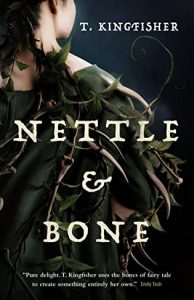 Or in my case, reread. I read this for a Library Journal review a few months back, and loved it as I do all of T. Kingfisher’s work, but not quite as much as I did Nettle & Bone. Listening to it now brought all the best parts back – particularly the perspective of the princess turned Toadling in her frustration, her longing, and her utterly justified anger at everything that brought her to this pass. Including herself.
Or in my case, reread. I read this for a Library Journal review a few months back, and loved it as I do all of T. Kingfisher’s work, but not quite as much as I did Nettle & Bone. Listening to it now brought all the best parts back – particularly the perspective of the princess turned Toadling in her frustration, her longing, and her utterly justified anger at everything that brought her to this pass. Including herself.
The way in which she rescues herself, and Halim, and finally gets the future she wants now and the home she wants later, was beautiful. As is Toadling, even if neither the reader nor Halim notice it at first. Because this is Toadling’s story, and she’s the heroine, and heroines are supposed to be beautiful. So she is, and so is her story.

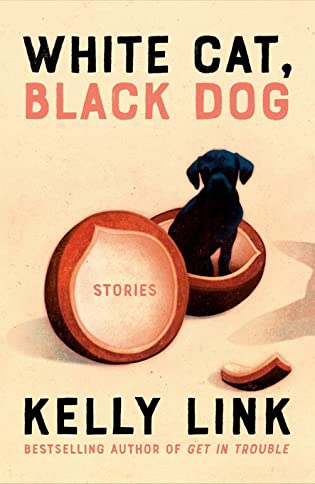 White Cat, Black Dog: Stories by
White Cat, Black Dog: Stories by 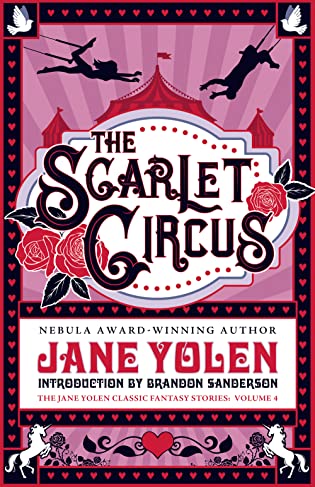 The Scarlet Circus by
The Scarlet Circus by 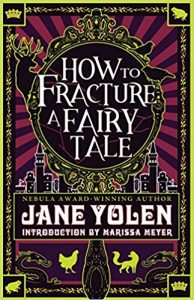 This ended up being my Valentine’s Day review because, to paraphrase the author’s forward just a bit, while the stories contained within are not “Romances” with a capital R, each story does contain a romantic element – even if that element is not the center of the story and seldom results in anything like a happy ever after.
This ended up being my Valentine’s Day review because, to paraphrase the author’s forward just a bit, while the stories contained within are not “Romances” with a capital R, each story does contain a romantic element – even if that element is not the center of the story and seldom results in anything like a happy ever after.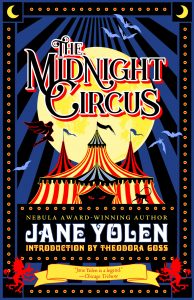 Those initial stories were interesting and fun but didn’t quite touch my heart – although “Dusty Loves” certainly tickled my funny bone a bit. These next ones, however, got a bit closer to the heart of the matter – or at least my heart.
Those initial stories were interesting and fun but didn’t quite touch my heart – although “Dusty Loves” certainly tickled my funny bone a bit. These next ones, however, got a bit closer to the heart of the matter – or at least my heart.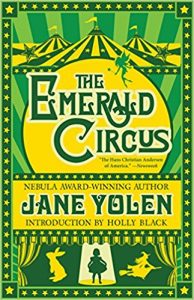 Escape Rating A-: Like most collections, the stories are a bit all over the map. I adored a couple, liked quite a few more, and a small number just missed the mark for me in one way or another – as the above descriptions show. But overall I’m very glad I picked this up, and enjoyed the ways that it played with romances of many types and stripes and definitions. That “love is all there is is all we know of love” doesn’t have to mean that all loves are exactly the same type.
Escape Rating A-: Like most collections, the stories are a bit all over the map. I adored a couple, liked quite a few more, and a small number just missed the mark for me in one way or another – as the above descriptions show. But overall I’m very glad I picked this up, and enjoyed the ways that it played with romances of many types and stripes and definitions. That “love is all there is is all we know of love” doesn’t have to mean that all loves are exactly the same type.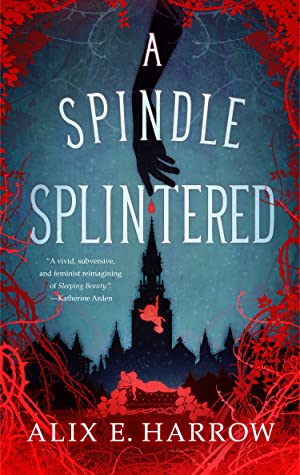 A Spindle Splintered (Fractured Fables, #1) by
A Spindle Splintered (Fractured Fables, #1) by 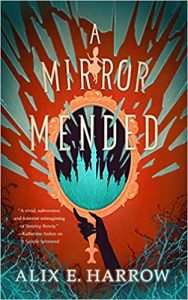 And it’s wonderful – especially when all the Sleeping Beauties carry off the princess and save the day, not just for her, but for each other as well.
And it’s wonderful – especially when all the Sleeping Beauties carry off the princess and save the day, not just for her, but for each other as well.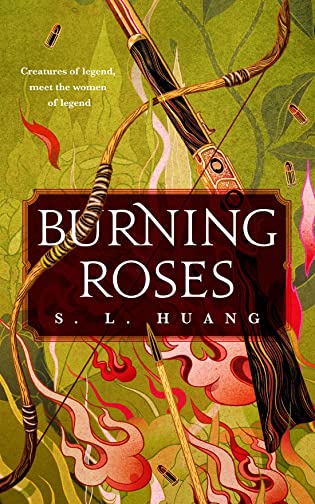 Burning Roses by
Burning Roses by 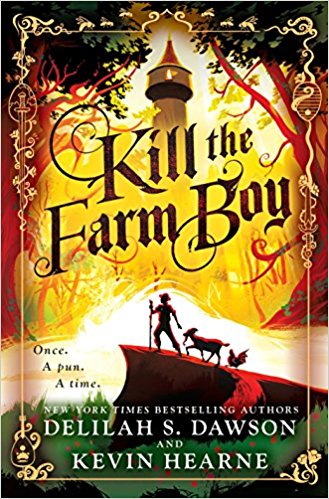 Kill the Farm Boy (The Tales of Pell, #1) by
Kill the Farm Boy (The Tales of Pell, #1) by 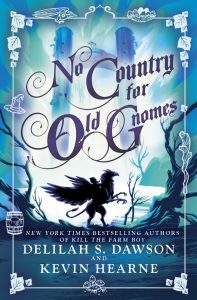 And those are almost always “funny once”.
And those are almost always “funny once”.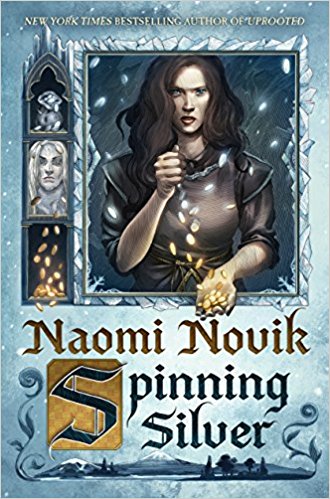 Spinning Silver by
Spinning Silver by 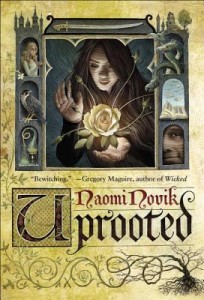 This is the story of Persephone at Night on Bald Mountain, with a bit of an assist from Rumpelstiltskin. In other words, Spinning Silver is another from the mind of Naomi Novik, a fitting follow up to the utterly marvelous
This is the story of Persephone at Night on Bald Mountain, with a bit of an assist from Rumpelstiltskin. In other words, Spinning Silver is another from the mind of Naomi Novik, a fitting follow up to the utterly marvelous 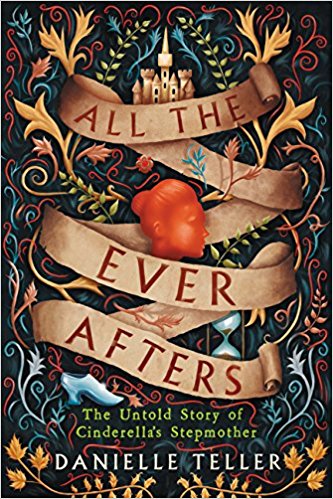 All the Ever Afters: The Untold Story of Cinderella’s Stepmother by
All the Ever Afters: The Untold Story of Cinderella’s Stepmother by 
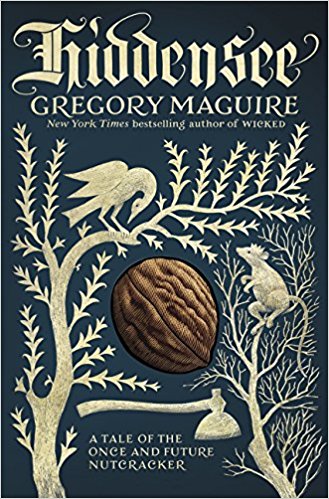 Hiddensee: A Tale of the Once and Future Nutcracker by
Hiddensee: A Tale of the Once and Future Nutcracker by 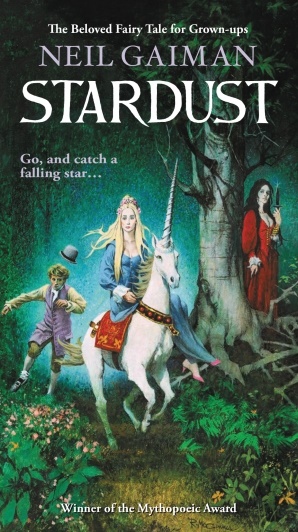 Stardust by
Stardust by 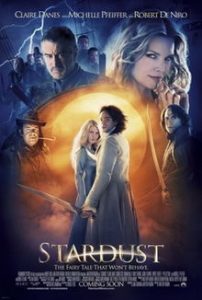 Never judge a book by its movie. I saw the movie
Never judge a book by its movie. I saw the movie 